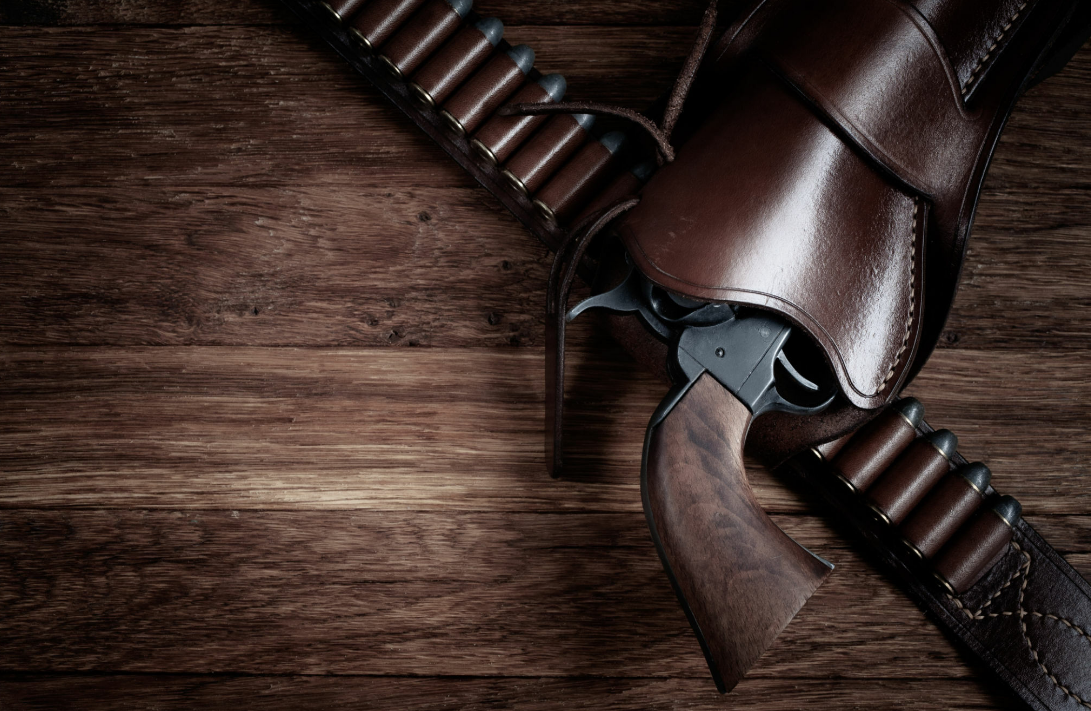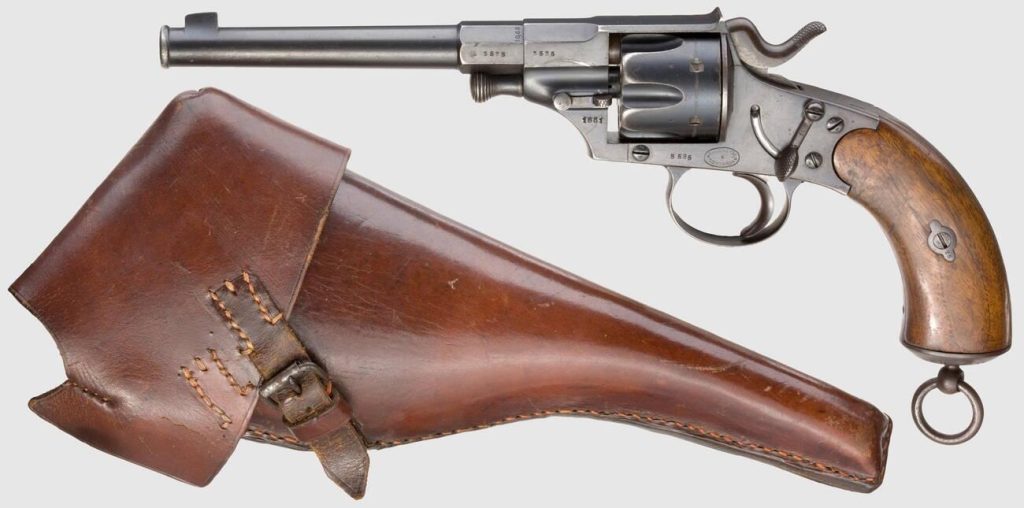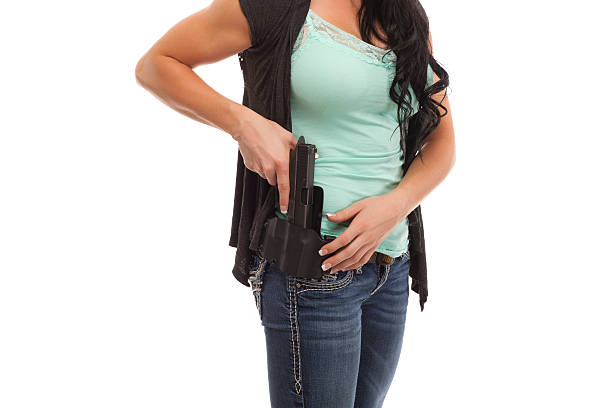Contents
hide


The revolver gun holster, an indispensable accessory for both firearm enthusiasts and professionals, stands as a steadfast companion to the iconic revolver. With roots tracing back to the mid-19th century, the history of the revolver holster mirrors the evolution of firearms, adapting to changes in design and materials over the years. In this guide, we explore not only the historical significance but also the critical importance of a quality holster. Whether you’re a law enforcement officer, a concealed carry permit holder, or simply a firearm enthusiast, understanding the pivotal role a holster plays in firearm safety and accessibility is paramount.
Beyond its historical context, this comprehensive guide delves into practical aspects, offering insights into the care and maintenance required for a revolver holster’s longevity. The guide goes further by addressing key considerations for prospective buyers, emphasising the significance of selecting the right type, material, and retention mechanisms. By providing a holistic view of the revolver holster, this guide equips readers with the knowledge needed to make informed decisions and highlights the responsibility associated with firearm ownership.
The history of the revolver gun holster is intertwined with the evolution of firearms themselves. Revolvers, with their rotating cylinders, gained popularity in the mid-19th century, and holsters quickly became a necessity for users to carry these powerful weapons securely. Over the years, holsters have adapted to various designs and materials, reflecting changes in both fashion and function.
A revolver holster serves a dual purpose: providing a secure and accessible means of carrying the firearm while ensuring the safety of the user and those around them. A well-designed holster not only keeps the revolver in place but also allows for a smooth and quick draw when needed. Whether you’re a law enforcement officer, a concealed carry permit holder, or an avid shooter, choosing the right holster is paramount.

Before diving into the details, it’s essential to understand the different types of revolver holsters available. Common options include belt holsters, inside-the-waistband (IWB) holsters, shoulder holsters, and pocket holsters. Each type caters to specific preferences, comfort levels, and modes of carry. Selecting the right holster type depends on factors such as intended use, attire, and personal comfort.
Like any piece of equipment, a revolver holster requires proper care to ensure longevity and optimal performance. Regular maintenance involves cleaning, inspecting for wear and tear, and treating the holster with appropriate conditioning agents. Neglecting these steps can result in diminished functionality and may compromise the safety of firearm handling.
Investing in a revolver holster requires thoughtful consideration. Before making a purchase, evaluate factors such as holster material, retention mechanisms, and compatibility with your revolver model. Additionally, consider the holster’s intended use—whether for everyday carry, range practice, or specialized applications. Researching user reviews and seeking recommendations can provide valuable insights into the performance and durability of different holster options.
Comfort is a critical aspect of holster selection, especially for those who carry regularly. The holster should feel comfortable against the body and not cause discomfort during extended periods of wear. Additionally, for those who prioritize concealed carry, choosing a holster with effective concealment features is crucial to maintaining a low profile while ensuring quick access to the firearm when needed.
Before purchasing and using a revolver holster, it’s essential to be aware of local laws and regulations pertaining to firearm carry. Different jurisdictions may have specific requirements and restrictions, including permitted holster types and carry positions. Staying informed about these legal considerations ensures responsible firearm ownership and use.
In conclusion, a comprehensive understanding of the revolver gun holster encompasses its historical significance, importance in firearm safety, proper care practices, and key considerations for prospective buyers. Whether you’re a seasoned firearm enthusiast or a newcomer to the world of revolvers, this guide serves as a valuable resource for navigating the diverse landscape of revolver holsters.
To maintain the functionality and appearance of your revolver holster, it’s crucial to adopt a regular maintenance routine. Start by cleaning the holster regularly, removing any dust, dirt, or debris that may accumulate over time. Use a soft brush or cloth to gently wipe the surface, ensuring that the holster remains free from abrasive particles that could affect its integrity.
Inspect the holster for signs of wear, focusing on areas that experience the most friction. Check the stitching, snaps, or retention straps for any loose threads or damage. If you notice any issues, address them promptly to prevent further deterioration. Applying a leather conditioner or preservative can help keep the material supple and resistant to cracking, particularly in leather holsters.
Revolver holsters come in various materials, each with its own set of advantages and considerations. Leather holsters are classic and often preferred for their aesthetic appeal and comfort. However, they may require more maintenance, especially in humid or wet conditions. Kydex and other synthetic materials offer durability and resistance to the elements but may lack the traditional feel of leather. Consider your preferences, the intended use, and the climate in which you’ll be carrying your firearm when choosing the material.
One of the critical aspects of a good revolver holster is its retention system. The holster should securely hold the firearm in place, preventing accidental dislodging or falls. Different holsters employ various retention mechanisms, such as thumb breaks, straps, or tension screws. Choose a retention system that strikes a balance between security and ease of draw, and ensure it is adjustable to accommodate your preferences.
Acquiring a revolver holster is not the end of the journey; it marks the beginning of responsible firearm ownership. Invest time in training and practice to become proficient in drawing and holstering your revolver safely. Familiarize yourself with the holster’s features and practice various draw techniques to enhance muscle memory. Regular practice sessions contribute to increased confidence and competence in handling your firearm.
If you’re new to revolver holsters or uncertain about which option suits your needs best, don’t hesitate to seek advice from experienced users or professionals. Local gun stores, shooting ranges, and online forums can be valuable resources for obtaining recommendations and insights. Hearing from those who have practical experience with different holster types can provide valuable perspectives that may influence your decision.
In conclusion, the journey into the world of revolver holsters is not just about selecting a piece of equipment; it’s about making informed choices, embracing responsible ownership, and prioritizing safety. Whether you’re drawn to the timeless appeal of leather or the modern functionality of synthetic materials, the right holster enhances your overall firearm experience. By considering the historical context, importance, care, and key considerations outlined in this guide, you’re well-equipped to make a choice that aligns with your preferences and needs. Remember, responsible firearm ownership starts with the holster you choose.
Get our latest news straight into your inbox

Leave a Reply